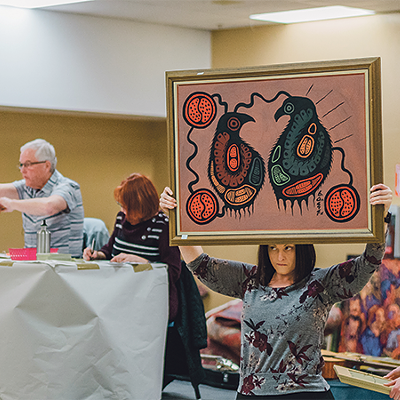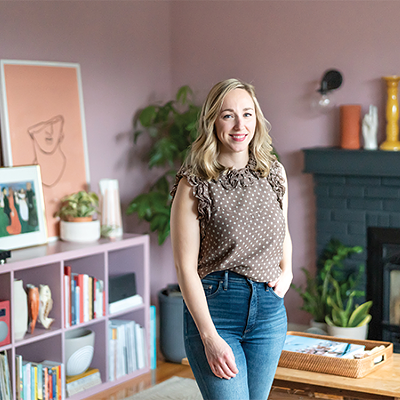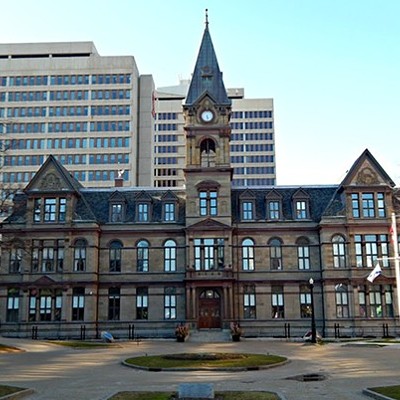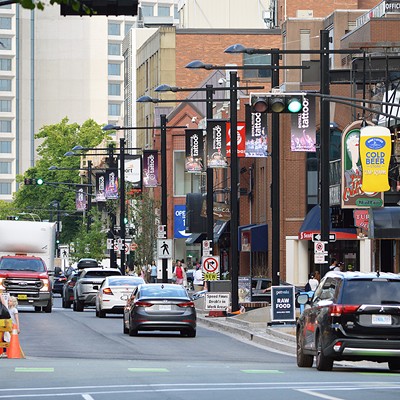Her first degree is in environment and resource studies from Waterloo, but while on an exchange in Melbourne, Ottawa native Sue Sirrs discovered landscape architecture. Now she does a lot of residential work in Halifax, along with a few prominent public pieces, including the first permanent exterior living wall east of Vancouver and north of New York City at the NSCC.
The Coast: How do you describe exactly what it is you do?
Sue Sirrs: It's a very broad profession. It works at the residential scale and at a larger scale, like the Grand Parade or the waterfront. Some of my colleagues are designing entire new communities on the north coast of Africa. They're doing everything, every sewer line, every fire hydrant, every hospital. I typically work at the residential and small project scale. I provide services that help homeowners create spaces, I like to think of backyards as sacred spaces. I love to work in the north end, the south end. It's really wonderful to create spaces for people to enjoy and meet their outdoor needs.
TC: How should people start planning their backyard space, before they speak to you?
SS: I want them to start thinking how they want to use that space. People come to me with very specific needs. They have a dog, they have young kids. Or in their front yard they're looking to create a space that's aesthetically pleasing. I do a lot of work around green roofs and living walls. We have a huge interest in using spaces people typically haven't used, like shed roofs, for example. I've also been doing work on play structures, like the new submarine at the Halifax waterfront.
TC: I know it well. It used to be a ship and now it's a big orange submarine!
SS: That was a really fun project.
TC: If someone can't afford a professional, are there some easy things they can do right away, given the materials available?
SS: Identifying your needs and your wants. It's surprisingly challenging for people. Some people say they want a lot of blooming flowers but they might have something that is inhibiting. Think about the type of materials. Think about the kind of environment you're trying to create. Ultimately, what most of us really want to do with our backyard is sit. I want R&R in my backyard. I don't want to create a landscape that's going to occupy a lot of my time. I want to do work upfront and create something that is a really special space I can mostly relax in it.
TC: And I guess it's a combination of organic and non-organic features to work with.
SS: Right. In my world we talk about hardscape and softscape. Hardscape is patio, deck, your new shed. And plant material is what we call softscape. Sometimes it's a lawn, sometimes it's removing your lawn. I do that too. People don't want to mow.
TC: We do a Green Halifax guide too, and through that I've learned that lawns aren't always the most environmental choice. Do you find that?
SS: When I look at some of the options, I'd rather people have a lawn than a gravel yard. There are tradeoffs. Lawns create a visual rest for the eye. When you talk about a lawn we can talk about other plant material than Kentucky bluegrass, a non-native species. Other things can create that restful vista, a space for your children to play or your dog to use, other plant material to complete that vignette.
TC: In your history working in Halifax, what kind of work have you done? What yards have you transformed?
SS: One of things people want here in Halifax is privacy. We're coming to an era where we're all so busy. One case comes to mind immediately. In the south end of Halifax people don't have fences. At the end of your work day, if you go into the backyard you have Bob and Betty talking to you on one side and people facing you from the other. You're obligated to say hello. So, creating privacy is a big thing.
Sue Sirrs’ tips on making an outdoor space:
› Figure out what’s important for you and your family.
› Do an assessment of your property and inventory what you like (both plant material and hardscape, sheds, patios, decks) and what you want to get rid of.
› Think about the elements you’d like to include. It could be that you’ll want to add a vegetable garden, pool, BBQ or kid space.
› Don’t feel overwhelmed. There’s no need to do everything right away. It’s OK to phase projects over time.
› Develop a plan. Put it down on paper so you can keep yourselves on track.
› Make sure you start with the structural projects first---fences, sheds, decks, stone work or foundation repairs as that work tends to be very disruptive to the property. People often want to start with plants but that’s kind of like starting your house renovation by picking paint colours. Make sure you include plants---they’re a critical part of design---but have a plan to protect them during construction phases or hold off buying new plants until construction is done.
› Hire a landscape architect or qualified professional if you need help with your project. They can help with all stages of a project from site assessment to design and installation. Often they provide solutions for overcoming difficult sites and provide direction on cost saving measures.
› My goal is to create comfortable spaces that allow owners to sit and enjoy without feeling like they’ve got a endless hours of property maintenance to do. Ultimately, we all need more time to rest and reflect than to mow and trim!














